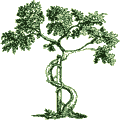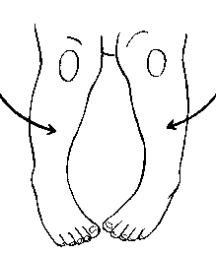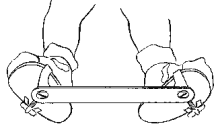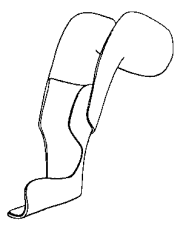
|
|||||||
Internal Tibial Torsion

What is it?
Internal Tibial Torsion (ITT) is a condition in early childhood in which the tibia (leg bone) is twisted inwards axially, causing the child to intoe as he walks. This is a very common condition -and considered normal unless it does not resolve beyond 18 to 24 months of age. ITT is universal in infants and toddlers, and when the child takes his first steps, intoeing is the norm. With walking, the ITT resolves, and disappears by 18 to 24 months of age.
What causes it?
ITT is a normal phase of skeletal development in the first 2 years of life. The tibia derotates itself over time, and the intoeing improves. During this phase, walking causes the ITT to correct itself. In a small proportion of children, however, the ITT does not resolve completely, or improves partially only. Even in these cases, the ITT can still improve spontaneously beyond age 2.
What are the symptoms?
The child intoes, and keeps intoeing beyond 18 to 24 months of age. In the more severe cases, the child trips frequently, much more than his peer, to the consternation of his parents.
What does your doctor do about it?
The doctor makes the diagnosis by checking the Thigh-Foot angle (TF angle). In a child 18 months of age, it should be between -10 degrees to +10 degrees. A value more than -10 degrees warrants the diagnosis of ITT, but not necessarily treatment. Clinically, intoeing is not significant unless the TF angle is worse than -45 degrees, so treatment should be limited to these children only.
The doctor will also check to see if the child has associated Metatarsus adductus (or varus) or Femoral Torsion.

Treatment for ITT traditionally consist of using a Denis-Browne bar at night for about 6-12 months. This is a very punishing treatment for the child, and parents have lost sleep nights because of this. A recent improvement is an articulated bar that allows some movement of the legs. This has made it more tolerable, but is still very tough on the child. Moreover, recent research found that the amount of corrective force on the tibial torsion using the bar has been negligible. Because the knees are in the extended position, most of the torque goes to the hips, rather than the tibia.

The Wheaton Brace with an upper component to keep the knee flexed at 90 degrees has recently been developed to address these problems. By keeping the knee flexed, the corrective torque goes to the tibial torsion where it is needed. Also, if only one leg is involved, the brace is applied for only that leg, leaving the other leg free. Compliance rate has been very high because of these features, thus enhancing efficacy of the brace. Night wear for 6 months usually corrects the ITT.
What can be expected after treatment?
Most cases of ITT resolve spontaneously. There are some physicians who feel that all cases of ITT correct spontaneously, and preach that no treatment is ever needed for ITT. Yet these same physicians in the same sermon describe surgical correction for ITT in those "rare" cases that does not resolve. There are other physicians that advocate early treatment of ITT, and recommend bracing as young as 6 months of age. When there is controversy, the middle ground is often the most reasonable. If one is selective about who one treats - just the severe ones above the age of 18 to 24 months, perhaps he could stay on the straight and narrow path between excessive treatment and negligence that could lead corrective surgery later in life.
NOTICE: The information presented is for your information only, and not a substitute for the medical advice of a qualified physician. Neither the author nor the publisher will be responsible for any harm or injury resulting from interpretations of the materials in this article.
Questions
or comments? Post your thoughts in the Orthoseek
Message Forum!
Find a pediatric orthopedic surgeon
in an area near you.
Home | About Us | Orthopaedic Topics | Message Forum
![]()
Comments, questions, or suggestions are welcome. Please
contact us using this form.